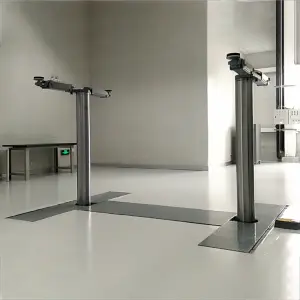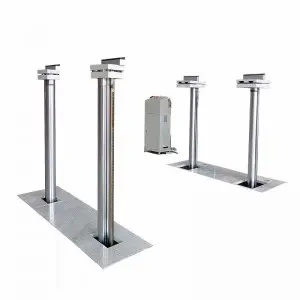
Discover the Benefits of Inground Lifts: A Comprehensive Guide to Enhancing Vehicle Maintenance and Performance
****

Discover the Benefits of Inground Lifts: A Comprehensive Guide to Enhancing Vehicle Maintenance and Performance
In the world of automotive repair and maintenance, having the right tools can make all the difference. One such tool that has garnered attention from both amateur enthusiasts and professional mechanics alike is the inground lift. As the automotive landscape continues to evolve, inground lifts have become an invaluable asset for those looking to enhance their service capabilities. In this article, we’ll explore what inground lifts are, their various benefits, differences from other lifts, and how they can significantly enhance the efficiency of vehicle maintenance.
What is an Inground Lift?
An inground lift, as the name suggests, is a type of vehicle lift that is installed into a concrete pit in the ground. Unlike above-ground lifts, which typically have a more prominent structure and operational mechanism above the ground, inground lifts are designed to be less obtrusive. They allow the vehicle to be lowered into the ground for maintenance, making it easier for mechanics to access the underside of the vehicle.
Typically, inground lifts consist of a hydraulic lifting mechanism and safety features designed to securely hold a vehicle in place while work is performed. These lifts come in various forms, including two-post and four-post configurations, depending on the specific needs of the vehicle being serviced.
Key Benefits of Inground Lifts
1. **Space Efficiency**: One of the primary advantages of inground lifts is their space-saving design. As these lifts are installed flush with the ground, they don’t take up valuable floor space like traditional lifts, which can be a significant benefit in busy workshops where multiple vehicles need servicing simultaneously. Additionally, the flat surface area around the lift allows for better maneuverability.

Discover the Benefits of Inground Lifts: A Comprehensive Guide to Enhancing Vehicle Maintenance and Performance
2. **Increased Accessibility**: When using an inground lift, mechanics can achieve a complete view of the vehicle’s undercarriage without cumbersome structures like columns or posts obstructing their work. This unrestricted access is particularly beneficial for performing detailed inspections or comprehensive repairs.
3. **Enhanced Safety Features**: Modern inground lifts come equipped with advanced safety systems, including automatic locking mechanisms and failsafe features. These are designed to prevent accidents and ensure that the vehicle remains securely in position while work is done. The lowered position of the vehicle also minimizes the risk of injury associated with slips or falls from higher lifts.
4. **Versatility**: Inground lifts are suitable for a wide variety of vehicles, from standard cars to larger trucks and SUVs. Depending on the lift’s specifications, it can handle various weights and dimensions, making it an excellent investment for auto shops that service a diverse range of vehicles.
5. **Improved Workflow**: With the ability to have multiple vehicles being serviced side by side in the same shop, inground lifts streamline workflow. Technicians can easily move between vehicles without needing to navigate around lift structures, which boosts productivity, especially in high-demand environments.
6. **Durability and Longevity**: Constructed from sturdy materials, inground lifts are designed to withstand heavy use over extended periods. When installed and maintained properly, they have a long lifespan that can make them cost-effective solutions for automotive shops.
Installation and Maintenance Considerations
While the benefits of inground lifts are appealing, it’s essential to consider the installation and maintenance aspects. Installing an inground lift requires extensive planning and excavation to create the pit where the lift will sit. Proper installation is crucial, as any misalignment can lead to operational issues and safety hazards.
Routine maintenance of an inground lift is equally vital to ensure its functionality and safety. Mechanics must regularly inspect hydraulic systems, safety features, and structural integrity to keep the lift in optimal condition. Neglecting maintenance can lead to severe accidents and costly repairs.
Conclusion
Inground lifts provide an optimal solution for automotive businesses looking to enhance their service capabilities while improving safety and efficiency. With benefits ranging from space-saving designs and increased accessibility to robust safety features, these lifts can cater to the demands of any repair shop. As the automotive industry continues to grow, investing in an inground lift can yield significant returns, making vehicle maintenance more effective and sustainable. Whether you’re operating a small garage or a large automotive facility, an inground lift could be a game-changer in your operation.quickjack portable car lift
